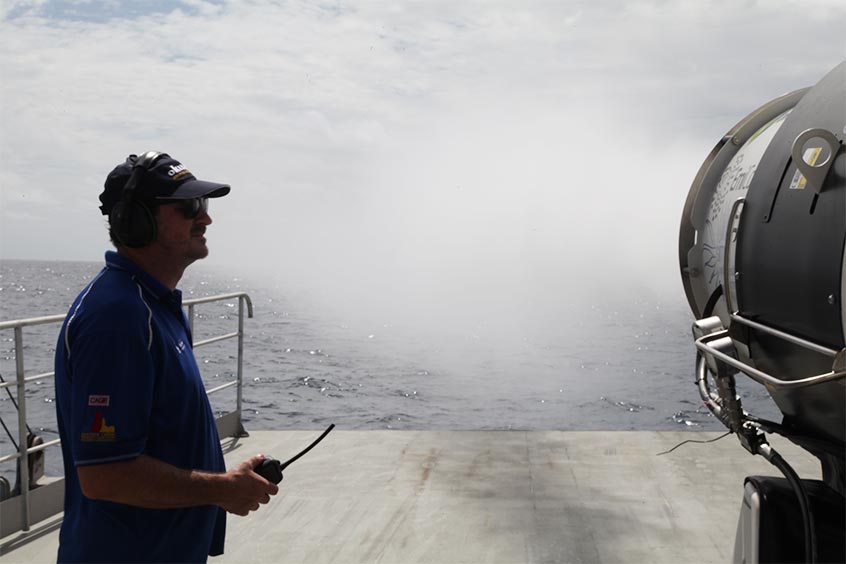Shading by fogging

Photo courtesy of Southern Cross University.
Functional objective:
Cooling and shading, to relieve acute heat and light stress on coral reef organisms by temporarily reducing their exposure
Delivery method:
Fogging
Deployment scale:
Medium (20 or more reefs)
Subprogram:
Fogging can mimic the effects of sea fog, which – like clouds – reduces the amount of sunlight and heat reaching the sea surface and the coral reefs beneath.
An artificial fog can be generated by adding liquid particles (seawater) into the air from dispensing devices on moored or attached platforms or vessels.
Preliminary modelling shows fogging could be effective in protecting targeted areas, over short critical periods (days to weeks).
Potential negative effects include over-shading which may slow coral growth. It would be ineffective during strong wind; however, bleaching is most likely to occur during calm conditions.
Fogging can be easily stopped, with no long-term impacts on weather patterns.
There are some commercially-available generators that would need to be modified to increase their scale and ability to run over extended periods.
Fogging with seawater is expected to be very environmentally low-risk.
Fogging and cloud brightening may work well together to reduce solar radiation on reefs across a wide range of atmospheric conditions.






